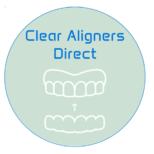Do you—or someone you care about—struggle with symptoms like panic attacks, a racing heart, high blood pressure, poor sleep, or chronic pain that don’t respond to typical treatments?
These symptoms might seem random or unrelated—but new research shows they often stem from the same underlying cause: compromised airway function, and the way your body adapts to it.
This isn’t just another theory. Dr. Vernon Kruger’s latest paper introduces the Airway–Posture–Autonomic Axis, a clinically grounded model backed by current scientific evidence. It reveals a real and measurable connection between your airway, your posture, and your autonomic nervous system (which controls things like heart rate, blood pressure, and stress response).
Here’s how it works:
→ Narrow jaws or a recessed lower jaw reduce tongue space and restrict your airway
→ Your body compensates by adopting forward head posture to help you breathe
→ That posture puts stress on key nerves in your upper neck and jaw, especially near the autonomic nerve centers
→ This strain overstimulates the sympathetic nervous system, leading to symptoms like anxiety, poor sleep, hypertension, and more
And it’s not just theoretical—this mechanism is backed by recent, peer-reviewed literature and supported by clinical outcomes.
There’s a better way forward
By combining airway-focused orthodontics (like palatal expansion and jaw advancement) with osteopathic or chiropractic care to correct posture and cranio-cervical strain, we can help reduce this nervous system overload and relieve many of the symptoms at their source.
Want to learn more?
A 15-minute panel podcast discussion—dives into the key takeaways from Dr. Kruger’s paper and breaks the concept down in clear, accessible language.
For those who want to dig into the full research, the full article—Airway, Posture, and Autonomic Health: An Integrated Approach—is also available to read online, with up-to-date references and evidence.
This is not fringe thinking. It’s a solid, science-backed framework that may explain why so many patients haven’t found answers—until now.

